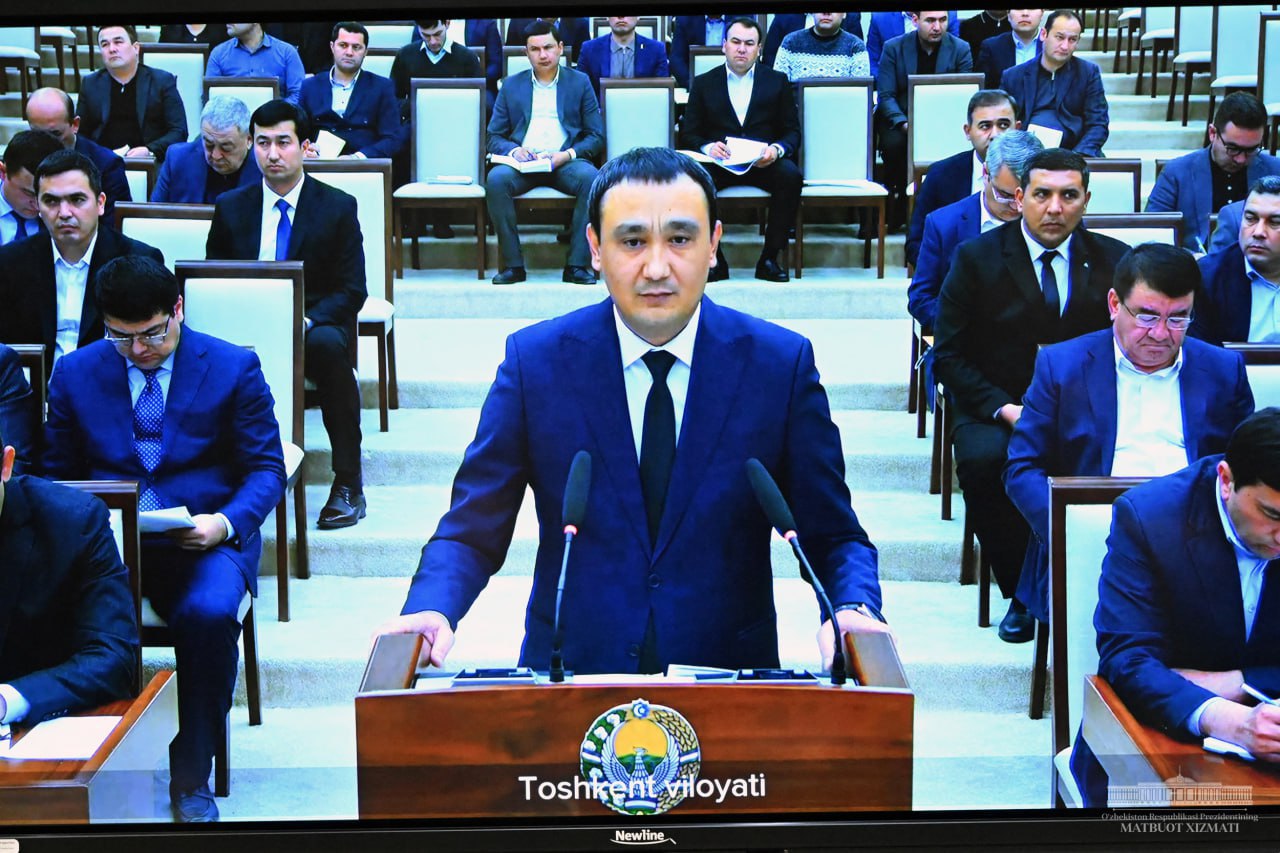
06.03.2024
On March 6, President Shavkat Mirziyoyev held a meeting on the issues of the full use of the opportunities of the districts and cities of the Tashkent region.
There are 15 districts and 7 cities in the Tashkent region. The region has a convenient geographic location, being an important transport corridor connecting the capital with the areas of the oasis and valley.
However, the economic development of the region falls far short of its potential. Neither trade, land and water nor transport and transit opportunities are fully exploited. In some indicators, the region lags even from remote regions.
The critical meeting listed the unused reserves and the passivity of district leaders.
With the dynamic development of the capital, the adjacent regional districts are lagging. For example, in Tashkent, Zangiota, Qibray, Yukori-Chirchik and Urta-Chirchik districts the volume of industrial production is several times less than in adjacent areas of the capital. The same is true of the construction industry.
The potential of the districts is not capitalized on, as the hokims lack the initiative to identify and use "growth points".
At the meeting, the responsible officials of cities and districts of the region were warned of the need for change in the activity, otherwise, their appropriateness would be considered.
It was noted that despite the conditions created by the state, there was an imbalance in the development of districts. Parkent, Yangiyul, Chinaz and Akkurgan districts which have a good tourist, transit base and economic preferences are especially lagging.
In this regard, on the instructions of the President, the real situation and opportunities of the districts, as well as the proposals of entrepreneurs, were studied.
The meeting analyzed "growth points".
In particular, the repair of roads leading to objects of tourist interest, the organization of minibus traffic and the allocation of land to entrepreneurs in the construction of trade and service points along the roads were proposed for the Parkent region. It is also possible to make efficient use of the land developed through precise identification and reinforcement of the coasts of Parkentsay, Kyzylsay and Chovlisay.
Many entrepreneurs in the Yangiyul district want to implement projects and attract investment, however, there are problems with finding land. It is therefore planned to create a small industrial zone specializing in food and hygiene products in an empty building.
In the Chinaz district, there are opportunities to build a shopping and entertainment complex and a modern fish market, expand trade and services along the roads and increase the number of greenhouses in private households.
Due to the lack of industrial capacity in the Akkurgan district, many women come to Tashkent and other districts to work in textile enterprises. It is planned to organize such enterprises based on unused buildings in the region.
The Head of state defined measures to improve the economy of the regions. Responsible officials have been instructed to analyze other areas of the region, identify additional "growth points" and increase sources of income.
Several plans have been developed for this purpose. In particular, in the Ohangaron district, there will be established an Uzbek-Hungarian industrial zone, where projects worth $100 million will be placed. A project worth $400 million on the production of household appliances, metal rental and processing of fruits and vegetables will be implemented in the Angren free economic zone, projects worth $260 million – in “Eltex Industrial” Technopark.
The meeting considered the issues of accelerating economic and social projects by attracting direct foreign investment. It was noted that it is planned to gradually transfer industrial enterprises from the capital outside its borders, which will create great opportunities for the Tashkent region.
Assistance will be provided to the self-employed in the transition to small businesses, as well as to the reactivation of businesses that have ceased to operate. Based on the experience of Chinaz, compact greenhouses and complexes for the storage and processing of products based on cooperation will be created.
Measures to increase the flow of local and foreign tourists to 5 million, as well as exports in tourism to no less than $300 million this year were discussed.
Special attention was paid to the training of women and young people in professions and their employment.






